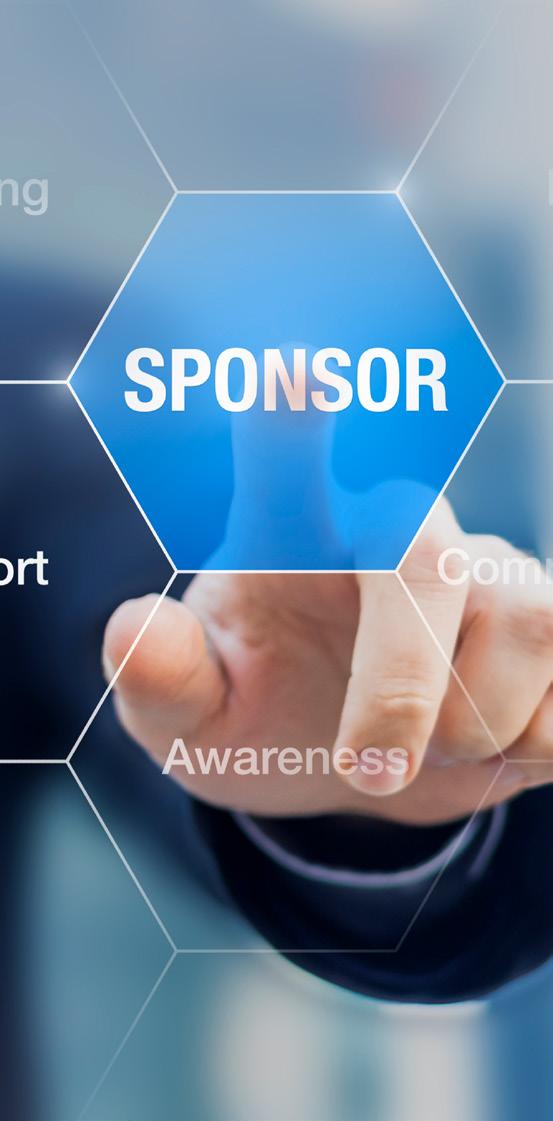

MODULE 3
Enhancing your member association
MODULE 3: ENHANCING YOUR MEMBER ASSOCIATION
Introduction
Once you’ve got your association up and running and have all the basic operational and service areas organised, you’ll want to start thinking about how you can best future proof your association for a sustainable and impactful future.
This module covers a range of topic areas helping you to build a high performing team, strong member and stakeholder community, and build your business resilience through revenue diversification and technology.
The module covers:
Growing a strong team – employee engagement
Succession planning
Member recruitment and retention
Developing a sponsorship / partnership strategy
Revenue diversification (including developing a training offering)
Leveraging AI
Dealing with complaints about members
If you have any questions about this module and how to implement it in your region, please get in touch with FIDIC at: memberservices@fidic.org
Developing an effective sponsorship programme
Most of FIDIC’s MAs are small with limited resources. Sponsorship programmes can support financial sustainability, deepen strategic partnerships, and align with organisational goals. A sponsorship programme should be adaptable and scalable across different contexts and as organisational strategic goals and values change.
This guidance note serves as a guide for building an effective sponsorship programme for your MA. It should help new, developing and mature FIDIC Member Associations (MAs). Whether starting from scratch or evolving an existing programme, the principles and practices outlined here offer a foundation for sustainable, impactful sponsorship.
Core Elements to the Sponsorship Process
Strategic Objectives
When developing a Sponsorship Programme, you should begin by identifying clear goals that extend beyond financial gain. These objectives ensure that sponsorships contribute meaningfully to the organisation’s mission and strategic direction and that you are making good choices about who you are partnering with. The goals might include:
• Diversifying income streams to reduce reliance on core funding and enhance financial resilience.
• Building credibility through partnerships with aligned and trusted organisations that reflect your MA’s values and priorities.
• Supporting professional development and sector-wide initiatives by engaging sponsors who can contribute knowledge, tools, or services that benefit your members and stakeholders.
• Strengthening your MA’s role as a sector advocate and thought leader, ensuring it is recognised as a key voice in industry discussions and policy development.

MODULE 3: ENHANCING YOUR MEMBER ASSOCIATION

Process Enhancements
Once you know what your goals are for your sponsorship programme, you should put in place a structured process for how you will attract and retain sponsors.
Having a structured process for your sponsorship programme should ensure you’re building long term stability into your sponsorship programme and not relying on ad hoc and relationship-dependent sponsorship practices. Your process should improve clarity, accountability, and efficiency across the sponsorship lifecycle. Key processes to include are:
• A documented sponsorship process that outlines each stage from initial engagement to renewal and retention.
• The formation of a cross-functional internal group responsible for overseeing sponsorships, ensuring continuity and reducing reliance on individual staff members. This might include, for example, clarifying responsibilities for identifying potential sponsors, initial sponsor contact, sponsorship negotiation, contractual management, delivery and ongoing relationship management.
• Development of a customisable sponsorship proposal template and a streamlined event prospectus, enabling consistent and professional communication with potential sponsors.
Tailoring Deliverables to Sponsors
A central feature of a successful sponsorship programme is the ability to tailor sponsorship offerings to the specific needs and goals of each sponsor. This ensures that partnerships are mutually beneficial and aligned with both parties’ strategic interests. This is a fairly time intensive process at the outset of the programme development but is intended to result in greater and more valuable relationship investments. The process should include:
• Conducting a “deep dive” into each sponsor’s business, understanding their objectives, target audiences, and brand positioning.
• Using this insight to align sponsor offerings with the organisation’s goals, ensuring that the partnership delivers value to both sides.
MODULE 3: ENHANCING YOUR MEMBER ASSOCIATION
• Drawing from a flexible benefits catalogue to build bespoke sponsorship packages—whether the sponsor is seeking brand visibility, thought leadership opportunities, or engagement with a specific audience.
• Presenting proposals using a templated framework that clearly communicates the value proposition and how the partnership will be structured.
• Building relationships across the sponsor organisation (for example, include the marketing lead of the sponsor organisation in all relevant conversations to ensure they buy-in to the value of the partnership along with the Chief Executive).
Tools and Practices
To support the delivery of the sponsorship programme, implement a suite of tools and practices to streamline operations, improve communication, and ensure consistency. These might include:
• A stocktake of sponsor benefits, helping the team match offerings to sponsor expectations.
• Customisable templates for sponsorship proposals and reporting, ensuring professional and consistent documentation.
• Regular mentoring and review sessions with external experts to refine the strategy and build internal capability.
These tools help embed your sponsorship programme into day-to-day operations and ensure that your team is equipped to manage sponsorships effectively.

MODULE 3: ENHANCING YOUR MEMBER ASSOCIATION

Ongoing Development
Sponsorship is an evolving area. As you continue to build out your sponsorship programme consider:
• How you will track that you are meeting your obligations under any sponsorship agreement.
• Designing reporting templates that clearly demonstrate return on investment to sponsors.
• Identifying aligned service providers who could become future sponsors or preferred partners –and continuing to cultivate relationships with them.
• Developing retention plans to maintain and grow existing sponsorship relationships.
• Resetting financial targets to reflect the new programme’s structure and potential.
• Recognising that building a successful programme takes time – this is an investment, and it is recommended that MAs ensure dedicated staff time and resources to doing this wel.
Benefits of the Approach
Taking this approach to your sponsorship programme can deliver.
• Financial Resilience: A broader sponsor base reduces dependency on a few contributors and enhances income stability.
• Operational Efficiency: Clear processes and shared ownership reduce inefficiencies and improve delivery.
• Stronger Partnerships: Tailored engagement leads to more meaningful and enduring relationships.
• Enhanced Credibility: Strategic alignment with sponsors reinforces the organisation’s leadership role and influence.
CASE STUDY: ACE NEW ZEALAND’S SPONSORSHIP PROGRAMME
ACE New Zealand’s sponsorship programme was a reactive and relationship-dependent practice that was not serving ACE or its membership well. Sponsorship was often sought from members who were already paying high membership fees (meaning members are paying twice for ACE’s benefits), sponsor value was not being well tracked, and relationships were narrowly managed meaning sponsorships were hard to maintain when those relationships were lost.
The development of the ACE New Zealand sponsorship programme, aligned to the steps set out above, represented a shift from reactive, relationship-dependent practices to a proactive, strategic, and structured approach. By clearly defining objectives (the MAs and the potential sponsors), embedding consistent processes, and equipping teams with practical tools, the programme is designed to deliver long-term value for both the organisation and its sponsors and ensure the longevity of the programme across personnel changes.
A key strength of this model is its adaptability—it allows for tailored engagement that meets the unique needs of each sponsor while staying aligned with the organisation’s broader goals. The emphasis on mutual value, transparency, and continuous improvement ensures that sponsorships are not just transactions, but meaningful partnerships that contribute to sector growth, professional development, and organisational resilience. Utilising this model, ACE New Zealand has attracted new sponsors for larger sponsorship amounts that previously secured.

Disclaimer
This document was produced by FIDIC and is provided for informative purposes only. The contents of this document are general in nature and therefore should not be applied to the specific circumstances of individuals. Whilst we undertake every effort to ensure that the information within this document is complete and up to date, it should not be relied upon as the basis for investment, commercial, professional, or legal decisions.
FIDIC accepts no liability in respect to any direct, implied, statutory and/or consequential loss arising from the use of this document or its contents. No part of this report may be copied either in whole or in part without the express permission of FIDIC in writing.
Copyright FIDIC © 2025
Published by International Federation of Consulting Engineers (FIDIC) World Trade Center II P.O. Box 311 1215 Geneva 15, Switzerland
Phone: +41 22 568 0500
E-mail: fidic@fidic.org
Web: www.fidic.org
